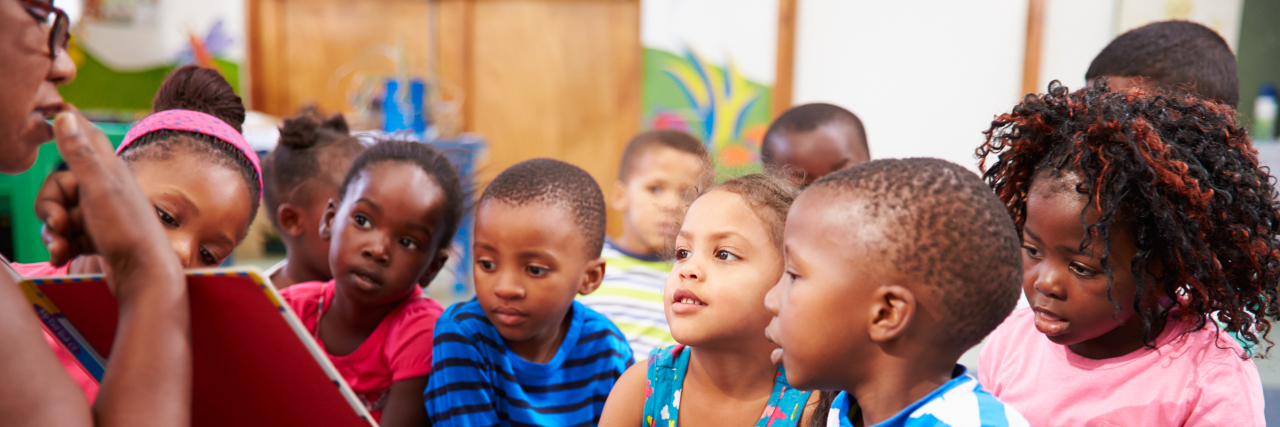On the walk home from school one day, my son stopped dead in his tracks and declared that he was mad and frustrated. The moment we got home, he burst into tears. The words “mad” and “frustrated” along with the names of a few of his classmates were all he could manage to express in between tiny sobs and the abrupt gasps for air that often accompany strong outbursts of emotion.
I was angry. “What kid would mistreat a first grader with autism?” I thought to myself, but I kept my feelings hidden. I wanted my son to feel I was his safe space, so we spent the evening playing with toys and games so he could have some fun and forget about his difficult day at school.
After discussing the situation with his teacher, I was shocked to discover that she saw no real problems between my son and the other children in his class or in his immediate environment during the course of the school day.
“He’s one of the most popular kids in class,” she said.
Even so, the small after-school meltdowns persisted. Each time I asked my son who had made him angry or frustrated, he provided the names of the same students.
If the teacher couldn’t see the problems my son was having with the other students, I knew I’d have to get to the bottom of the matter on my own. Thankfully, his teacher was very cooperative and was just as interested in finding out the source of my son’s displeasure with his classmates. A visiting day was arranged and I was allowed to sit in his classroom for part of the day to observe my son’s interactions with the other students. What I saw that day blew me away.
When we think of bullying, we often envision a stronger or older child making fun of, physically intimidating or abusing a child who is perceived to be weaker in some way. My thoughts of what my son was experiencing in school aligned with this point of view completely.
On my visit to the school that day, I expected to see children without autism taunting my son because of his constant singing, the way he speaks or how he tends to repeat the things other children say. But I found nothing close to what I expected.
What I found instead was a group of adorable and friendly children on the autism spectrum and with other disabilities who genuinely liked each other and were each learning how to interact with other children in healthy ways. Like my son, these kids had behaviors that impacted how they engaged with their peers. Sometimes those behaviors were cute but could be perceived as annoying or even intimidating.
Instead of being what is traditionally considered to be bullied, my son had been on the receiving end of some of the challenging behaviors of his classmates and frustrated by the vocalizations of his peers. It had negatively impacted his day, making him feel frustrated. At lunchtime his cookies were stealthily being stolen by an adorable girl who has only recently become verbal. One boy with learning delays pushed another boy who’s on the autism spectrum because he wanted to stand at the front of the line after recess. Another student kept rolling on the floor and had to be redirected to group instruction, often causing reading time to be repeatedly delayed, which was a great source of frustration for my son, who wanted to see the pictures in the book.
It became quickly apparent that none of these children were bullies. They were kids on the autism spectrum or with other disabilities who were learning to have greater impulse control and to attend to tasks for the long periods of time required for classroom instruction. I laughed to myself when I saw how one of my son’s cute little classmates slid her hand along the lunchroom table and snatched one of his chocolate chip cookies. She clearly meant him no harm. She just had a really hard time controlling the impulse to grab someone else’s cookies.
To the credit of his teachers, they intervened and redirected the other students each time a behavior got out of hand or negatively impacted another student. Later, when I discussed my visit with his main classroom teacher, she told me that she considers each instance of challenging or negative behavior between students a teachable moment that can help each child learn better interpersonal and coping skills.
A new seating placement during lunchtime and increased time spent helping my son use his words to express his feelings have put an end to the after-school tears and have helped him learn how to have healthy interactions with others.
As a result of my son’s experiences, I learned that what may appear to be bullying or harassment from other students on the surface may be caused by another child’s inability to control their emotions and impulses. I also discovered these seemingly negative situations can be successfully treated as teachable moments that can be used to further the development of all of the kids involved.
Getty photo by Monkey Business Images.

